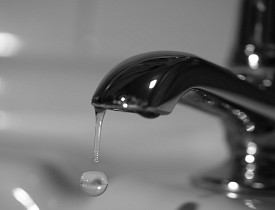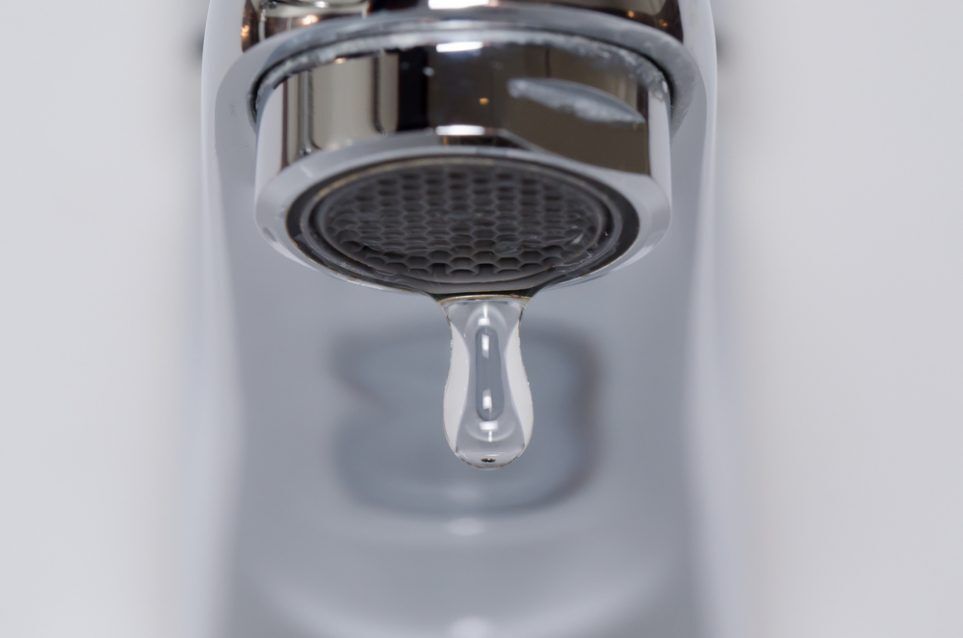Your Motives Behind Dealing with a Faulty Faucet
Your Motives Behind Dealing with a Faulty Faucet
Blog Article
This post following next pertaining to Should I Repair or Replace a Leaky Faucet? is immensely insightful. Check it out for your own benefit and figure out what you think of it.

Dripping faucets could feel like a minor inconvenience, however their impact goes beyond simply the inconvenience of the noise. From wasting water to sustaining unneeded financial expenses and wellness risks, neglecting a trickling faucet can result in various consequences. In this short article, we'll delve into why it's important to resolve this typical household concern promptly and properly.
Waste of Water
Ecological Impact
Dripping faucets add dramatically to water wastage. According to the Environmental Protection Agency (EPA), a solitary tap leaking at one drip per secondly can waste greater than 3,000 gallons of water per year. This not just stress water sources however additionally impacts environments and wild animals depending on them.
Financial Prices
Boosted Water Bills
Beyond the ecological influence, dripping faucets can inflate water expenses considerably. The gathered waste in time converts into higher energy expenditures, which could have been prevented with timely repair work.
Prospective Residential Or Commercial Property Damage
Furthermore, prolonged dripping can lead to damage to fixtures and surfaces surrounding the tap. Water build-up can trigger staining, deterioration, and also structural issues if left neglected, causing additional repair prices.
Wellness Worries
Mold and Mold Growth
The constant visibility of wetness from a trickling tap creates an excellent setting for mold and mildew development. These fungi not only endanger interior air quality yet also present health risks, particularly for people with breathing conditions or allergies.
Waterborne Illness
Stationary water in trickling taps can end up being a breeding place for microorganisms and other microorganisms, raising the danger of waterborne conditions. Contaminants such as Legionella bacteria thrive in stagnant water, potentially leading to major illnesses when ingested or inhaled.
Do it yourself vs. Specialist Repair work
Pros and Cons of Do It Yourself Repair
While some may attempt to repair a leaking faucet themselves, do it yourself repair services feature their very own collection of difficulties. Without correct knowledge and tools, do it yourself efforts can exacerbate the problem or lead to insufficient repairs, lengthening the problem.
Benefits of Working With a Specialist Plumber
Hiring a professional plumber guarantees that the underlying reason for the trickling faucet is dealt with successfully. Plumbers have the know-how and tools to diagnose and repair tap issues effectively, saving time and minimizing the danger of further damage.
Step-by-Step Overview to Fixing a Dripping Tap
Tools Called for
Before attempting to deal with a trickling tap, gather the necessary devices, including an adjustable wrench, screwdrivers, substitute components (such as washing machines or cartridges), and plumber's tape.
Common Tap Issues and Their Solutions
Identify the kind of faucet and the particular issue causing the drip. Common issues include damaged washing machines, rusty valve seats, or defective O-rings. Refer to supplier guidelines or online tutorials for detailed guidance on repairs.
Preventive Measures
Normal Upkeep Tips
To avoid trickling taps, do regular maintenance such as cleaning up aerators, checking for leakages, and replacing damaged parts quickly. Furthermore, take into consideration installing water-saving devices or upgrading to extra effective fixtures.
Value of Prompt Services
Attending to dripping faucets as soon as they're discovered avoids further water waste and prospective damage, eventually conserving both water and cash in the long run.
Impact on Building Value
Perception of Well-Maintained Property
Maintaining a residential or commercial property in good condition, consisting of dealing with upkeep issues like dripping faucets, improves its regarded worth and worth amongst potential customers or occupants.
Impact on Resale Value
Features with well-kept plumbing components, including faucets, command higher resale worths in the real estate market. Addressing dripping faucets can add to a positive impact during property evaluations and arrangements.
Ecological Duty
Private Payment to Conservation
Taking obligation for dealing with trickling taps aligns with wider initiatives towards water preservation and environmental sustainability. Every individual's activities collectively make a considerable effect on maintaining valuable sources.
Lasting Living Practices
By focusing on punctual repairs and adopting water-saving behaviors, individuals contribute to lasting living techniques that profit both existing and future generations.
Conclusion
Addressing a leaking tap goes beyond plain ease; it's a vital action towards conserving water, minimizing financial expenses, and protecting wellness and property. Whether with DIY repairs or specialist support, taking action to take care of dripping taps is a tiny yet impactful method to promote liable stewardship of resources and add to a healthier, a lot more sustainable future.
How to Fix a Leaky Faucet: Step-by-Step Repair Guide
A leaky faucet may seem like a simple annoyance, but if it's not fixed promptly, that leak could cost hundreds to potentially thousands. From water damage to mold, mildew, and high water bills, even a tiny leak can be catastrophic if left unattended. Damage like this can even affect the overall value of your home, so it's important to take the right approach for leaky faucet repair. You may need the help of a plumber in some cases, but we've got a few tips you can try on how to fix a leaky faucet before calling the pros.
Four Faucet Types
When you're learning how to fix a leaky faucet, the first step is knowing what kind of faucet you're working with! There are four common types.
Cartridge Faucets
Cartridge faucets come in one- or two-handled varieties. In one-handled cartridge faucets, hot and cold water combines in a single cartridge. In the two-handled versions, hot and cold water are controlled separately and mixed in the faucet.
Ball Faucets
Ball faucets have a single lever you push up and down to adjust the pressure and rotate to change the temperature. A slotted metal ball controls the amount of water allowed into the spout.
Compression Washer Faucets
They're the oldest type of faucet, but they're still used in many homes — especially older ones. Compression faucets have two separate handles that, when turned, raise or lower the washer that seals a water valve. This valve stops water from flowing through the faucet when it is turned off.
Disc Faucets
Disc faucets rarely need to be repaired due to their maintenance-free design. The water flow is controlled by two discs — the upper one raises and lowers against a fixed lower disc, creating a watertight seal. If your disc faucet starts leaking, you may need to replace the seals or clean residue buildup from the inlets.
Fixing a Leaky Faucet
Step 1: Turn Off the Water
Whether you're learning how to fix a leaky bathtub faucet or how to fix a leaky kitchen faucet, always turn off the water supply to your working area when you're fixing a leak. The last thing you want is a flood added to your list of things to fix.
Look for the shutoff valves below your sink or around the tub and turn them clockwise to stop the water flow. If your faucet doesn't have shutoff valves, you may need to turn off the water for the whole house. Check to make sure it's off by turning the faucet on. If nothing comes out, you're ready to start the repair.
Step 2: Take Apart the Faucet
How you disassemble your faucet depends on the type of fixture you have. You can use a flathead screwdriver to remove the caps on top of the handle or handles for cartridge and compression faucets. Inside, you should see handle screws. Unscrew these with a screwdriver to remove the handle.
Disc- and ball-style faucets will typically have an inlet screw near the handle, and removing that will reveal the interior of the faucet.
Detach the Valve Stem
For cartridge- and compression-style faucets, you'll see the inner valve stem or cartridge once you remove the faucet handles. If you have a compression faucet, unscrew the brass valve stem. If you have a cartridge faucet, pull out the cartridge. If your cartridge has been in place for a while, it may require some tools or extra force to remove it due to mineral deposits.
Examine and Replace Parts
Once you've removed the parts, check them out to confirm what needs to be replaced. You may see corroded rubber washers, O-rings, stems, or cartridges. On a ball-style faucet, check the seats and springs for damage.
If you need to repair a leaky disc faucet, check the inlet and seals on the lower disc.
Once you determine what parts must be replaced, visit your local hardware store. Bring the damaged parts with you to ensure you can purchase the correct components to replace them.
Clean Valves and Faucet Cavity
If you've removed a stem or cartridge, you may notice mineral buildup in the faucet's threads. Use white vinegar to clean the valve seat by soaking it for a few minutes, then scrub it away with a soft toothbrush and rinse with warm water. You can also clean the interior of the faucet in the same way.
Reassemble the Faucet
Once your faucet is cleaned and the required parts have been replaced, it's time to reassemble it. Put the pieces back together and slowly turn the water supply back on. Doing this slowly is crucial because too much initial water pressure can damage the new hardware you've just installed.
https://homewarranty.firstam.com/blog/how-to-fix-leaky-faucet

I hope you enjoyed our section about Why Are My Faucets Dripping (And Can I Fix It Myself)?. Thanks a lot for taking the time to browse our short article. Sharing is nice. You won't know, you may just be doing someone a favor. I am grateful for being here. Please visit our blog back soon.
Report this page